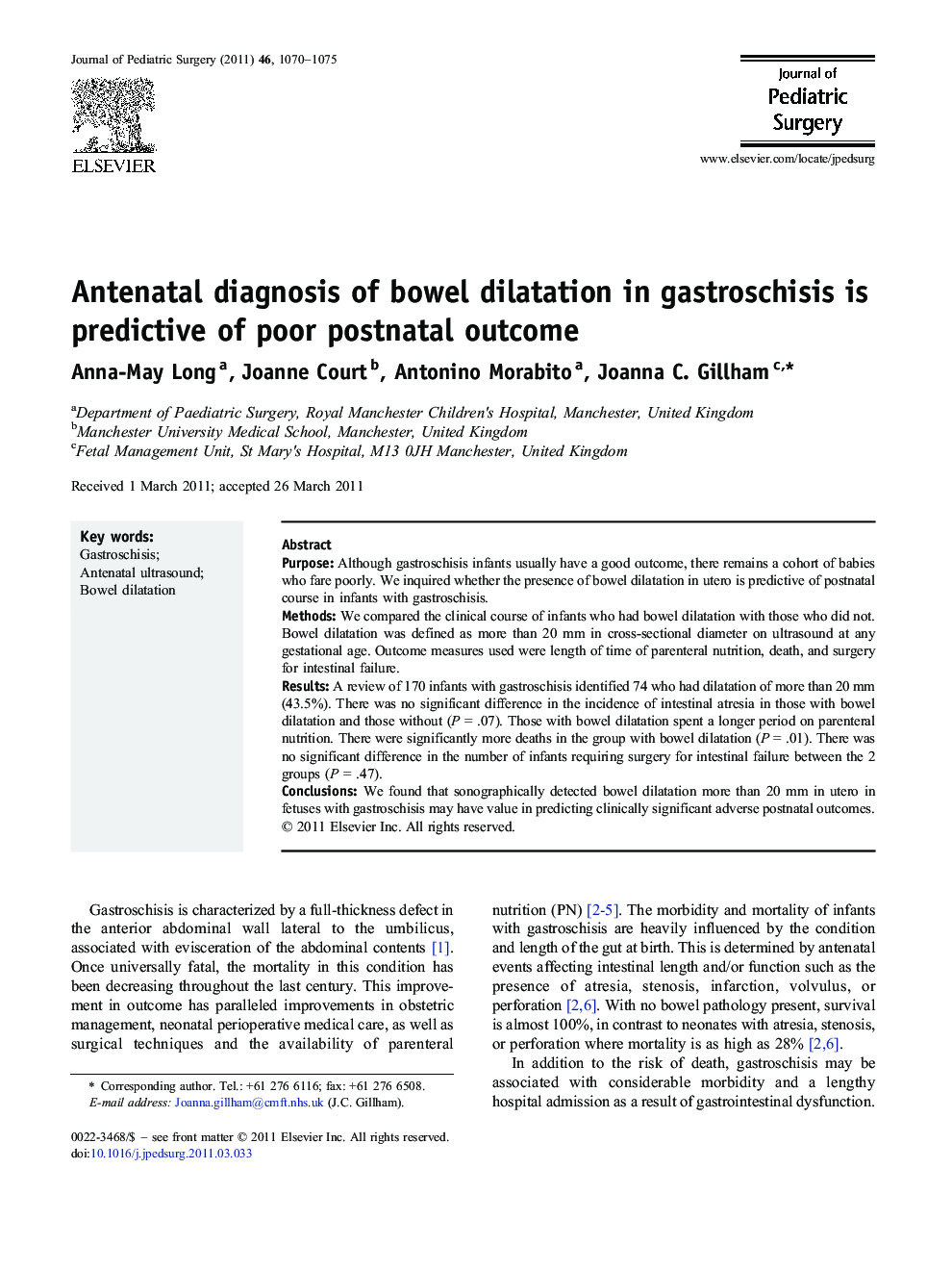| Article ID | Journal | Published Year | Pages | File Type |
|---|---|---|---|---|
| 4157074 | Journal of Pediatric Surgery | 2011 | 6 Pages |
PurposeAlthough gastroschisis infants usually have a good outcome, there remains a cohort of babies who fare poorly. We inquired whether the presence of bowel dilatation in utero is predictive of postnatal course in infants with gastroschisis.MethodsWe compared the clinical course of infants who had bowel dilatation with those who did not. Bowel dilatation was defined as more than 20 mm in cross-sectional diameter on ultrasound at any gestational age. Outcome measures used were length of time of parenteral nutrition, death, and surgery for intestinal failure.ResultsA review of 170 infants with gastroschisis identified 74 who had dilatation of more than 20 mm (43.5%). There was no significant difference in the incidence of intestinal atresia in those with bowel dilatation and those without (P = .07). Those with bowel dilatation spent a longer period on parenteral nutrition. There were significantly more deaths in the group with bowel dilatation (P = .01). There was no significant difference in the number of infants requiring surgery for intestinal failure between the 2 groups (P = .47).ConclusionsWe found that sonographically detected bowel dilatation more than 20 mm in utero in fetuses with gastroschisis may have value in predicting clinically significant adverse postnatal outcomes.
